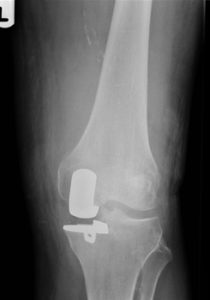Partial knee replacement is an option for a small percentage of patients with osteoarthritis of the knee. A partial replacement maybe recommended if your arthritis is confined to a single part (compartment) of your knee.
Your knee is divided into three major compartments: The medial compartment (the inside part of the knee), the lateral compartment (the outside part), and the patellofemoral compartment (the front of the knee between the kneecap and thighbone). In a unicompartmental knee replacement, only the damaged compartment is replaced with metal and plastic. The healthy cartilage and bone in the rest of the knee is left alone.

Multiple studies have shown that modern unicompartmental knee replacement performs very well in the vast majority of patients who are appropriate candidates.
The advantages of partial knee replacement over total knee replacement include:
Also, because the bone, cartilage, and ligaments in the healthy parts of the knee are kept, most patients report that a unicompartmental knee replacement feels more “natural” than a total knee replacement. A unicompartmental knee may also bend better.

Clinical results of the Oxford® Partial Knee show survivorship of 98% or more at 10 years from several centres, results that equal those of the most successful Total Knee Replacements. Clinical tests have also proven that Unicompartmental knee replacement prevents osteoarthritis from spreading to the unaffected lateral and patellofemoral compartments of the knee if the operation is performed at an early stage of the disease.